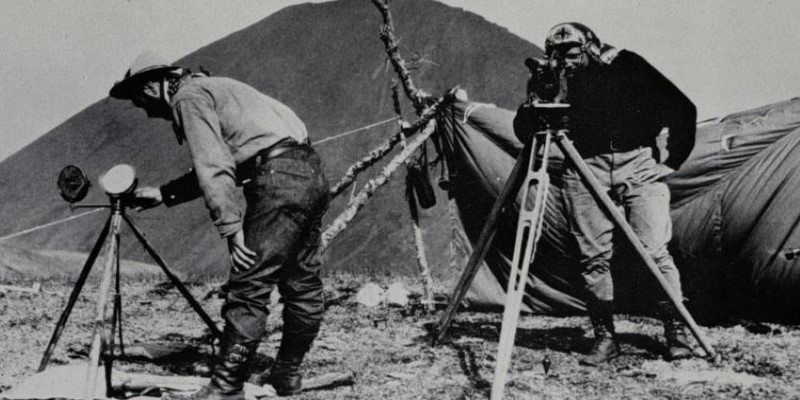
The History of Photography: When Was the Camera Invented?
Jan 31, 2024 By Eleanor
Cameras have become such an integral part of modern life that it’s easy to forget their journey began centuries ago. The ability to capture a moment and preserve it forever is something we now take for granted. Still, the history of photography reveals a fascinating story of innovation and human ingenuity.
The opening question, "When was the camera invented?" opens the door to technology that not only creates art but also changes the way we live, see history, and relate to others. This article is an exciting journey across time to explore where the invention of the camera started, the early milestones it hit, and how it has evolved into the mighty tool that fits comfortably in our palms today.
The Origins: Camera Obscura and Early Inspirations
The camera's origins date back long before photography existed, rooted in the ancient discovery of the camera obscura. This early optical device projected images of its surroundings onto a surface by allowing light to pass through a small hole, creating an inverted reproduction of the scene outside. Both Chinese and Greek civilizations understood this principle, laying the groundwork for our understanding of optics and image formation.
In the 11th century, Persian scientist Ibn al-Haytham further developed this idea, revolutionizing the study of light and vision. His work proved that light moves in straight lines, which accounted for the camera obscura's image seeming upside down. The device initially started as a scientific curiosity but gained popularity with Renaissance artists who incorporated the use of the camera obscura for tracing images in their work.
Despite its importance, the camera obscura was only an observation tool, not a way to preserve it. It took centuries of testing and development to transform projecting an image from being transient to being permanent, a defining point in the history of photography.
The Dawn of Photography: Capturing Light
Developing the camera, as it would later be known—a light-recording device—was closely associated with the creation of photography. In 1826, French inventor Joseph Nicéphore Niépce captured what is often called the first photograph. He used a process he termed heliography. Niépce achieved this using a camera obscura to project an image onto a polished pewter plate coated with a light-sensitive substance. After hours of exposure to sunlight, the image—albeit crude and faint—was fixed onto the plate.

Building on Niépce’s work, Louis Daguerre introduced the daguerreotype process in 1839, a breakthrough that made photography more practical and widely accessible. Daguerre’s method involved exposing a silver-coated copper plate to iodine vapor, creating a light-sensitive surface. The plate was then exposed to light in the camera and developed using mercury vapor. While these images were fragile and difficult to replicate, they were astonishingly detailed compared to Niépce’s earlier attempts.
The Evolution of the Camera
The mid-19th century saw a flurry of innovations in photography and camera design. William Henry Fox Talbot's 1841 introduction of the calotype process brought a significant change: it allowed for the production of multiple copies from a single negative. Unlike the daguerreotype, which was a one-of-a-kind image, Talbot’s process made photography more versatile and laid the groundwork for modern photographic techniques.
Cameras themselves also began to evolve. Early devices were bulky, requiring tripods and long exposure times. By the late 19th century, advancements in lens technology and the introduction of roll film by George Eastman revolutionized the field. Eastman’s Kodak camera, launched in 1888, was a game-changer. It was compact, user-friendly, and came preloaded with enough film for 100 exposures. Once the film was used, the camera was sent back to the factory for developing and reloading—a convenience that democratized photography and made it accessible to amateurs.
The Rise of Modern Photography and the Digital Age
The 20th century marked a period of rapid advancement in camera technology as photography became increasingly popular. Manufacturers competed to develop cameras that were smaller, faster, and more versatile. The 35mm film camera, pioneered by Leica in the 1920s, became a breakthrough innovation, offering high-quality images in a compact, portable format. These cameras quickly became the gold standard for professionals and amateurs alike.

The mid-century brought another revolution with the advent of instant photography, which Polaroid introduced. These cameras allowed users to capture and develop photographs within minutes, offering unparalleled convenience and captivating public interest. However, the most transformative leap occurred in the late 20th century with the emergence of digital technology. Digital cameras, first introduced in the 1980s, utilized electronic sensors to capture and store images, eliminating the need for film and complex chemical development. This innovation made photography more accessible, efficient, and environmentally friendly.
The 21st century ushered in the era of smartphones and social media, revolutionizing how cameras are used. Today, almost everyone carries a high-quality camera in their pocket, capable of capturing professional-grade images and sharing them instantly. Platforms like Instagram and Snapchat have turned photography into an everyday activity, fueling a global obsession with visual storytelling. Modern cameras now feature advanced technologies such as artificial intelligence, high-resolution sensors, and even the ability to capture images in complete darkness. Despite these advancements, the core purpose of photography—preserving moments—remains unchanged, reflecting its timeless significance in our lives.
Conclusion
The invention of the camera is a testament to humanity’s enduring desire to preserve moments and tell stories. From the camera obscura’s early optical wonders to the digital marvels of today, each innovation has redefined how we capture and share life. Photography has not only chronicled history but also shaped culture, art, and personal expression. Understanding when the camera was invented reminds us of the remarkable journey of technological progress. Today, cameras are everywhere, but their purpose remains unchanged: to freeze time and preserve memories. As technology evolves, the art of photography will continue to inspire and connect us.
-
 Art Jan 31, 2024
Art Jan 31, 2024Carve and Print: The Art of Woodblock Printing Simplified
Unlock your creativity with woodblock printing! Easy steps for carving and printing unique designs. Begin your artistic journey now. Read more!
-
 Internet & Telecom Jan 31, 2024
Internet & Telecom Jan 31, 2024Strategies for Data Center Optimization
Help organizations achieve efficiency and cost-effectiveness with Data Center Optimization. Explore ways to increase data center resource use, performance, and scalability.
-
 Entertainment Feb 02, 2024
Entertainment Feb 02, 2024The Grandest Gatherings in Sports History: Top Legendary Events
Experience the sports realm with the biggest attendance events. Unearth the excitement and stories of these colossal gatherings that captivated millions.
-
 Entertainment Jan 31, 2024
Entertainment Jan 31, 2024Meta Quest 3 Review – The Clearer Picture
Does Meta Quest 3 meet its expectations and deliver? Read the Meta Quest 3 review and find out in this informative article.